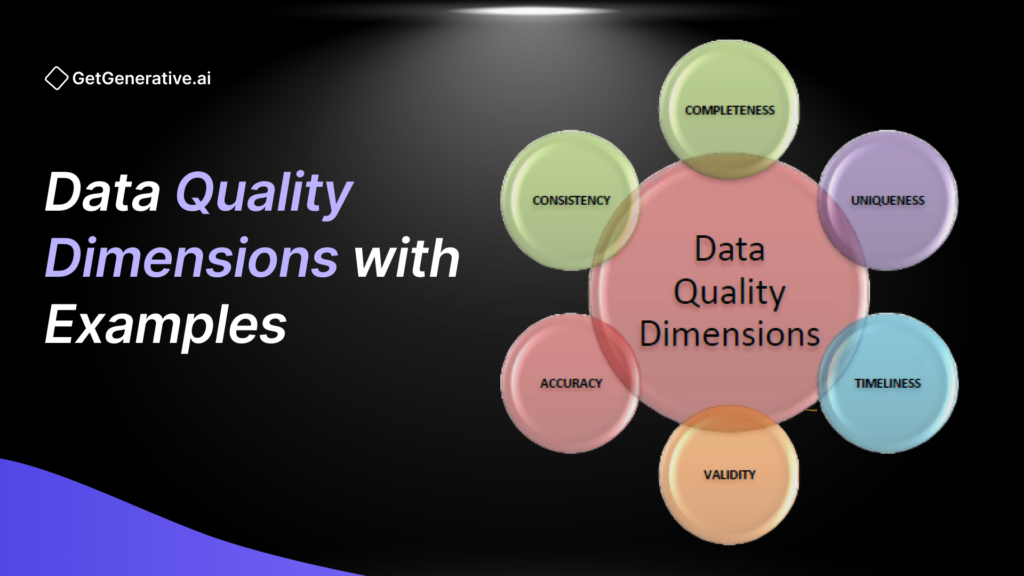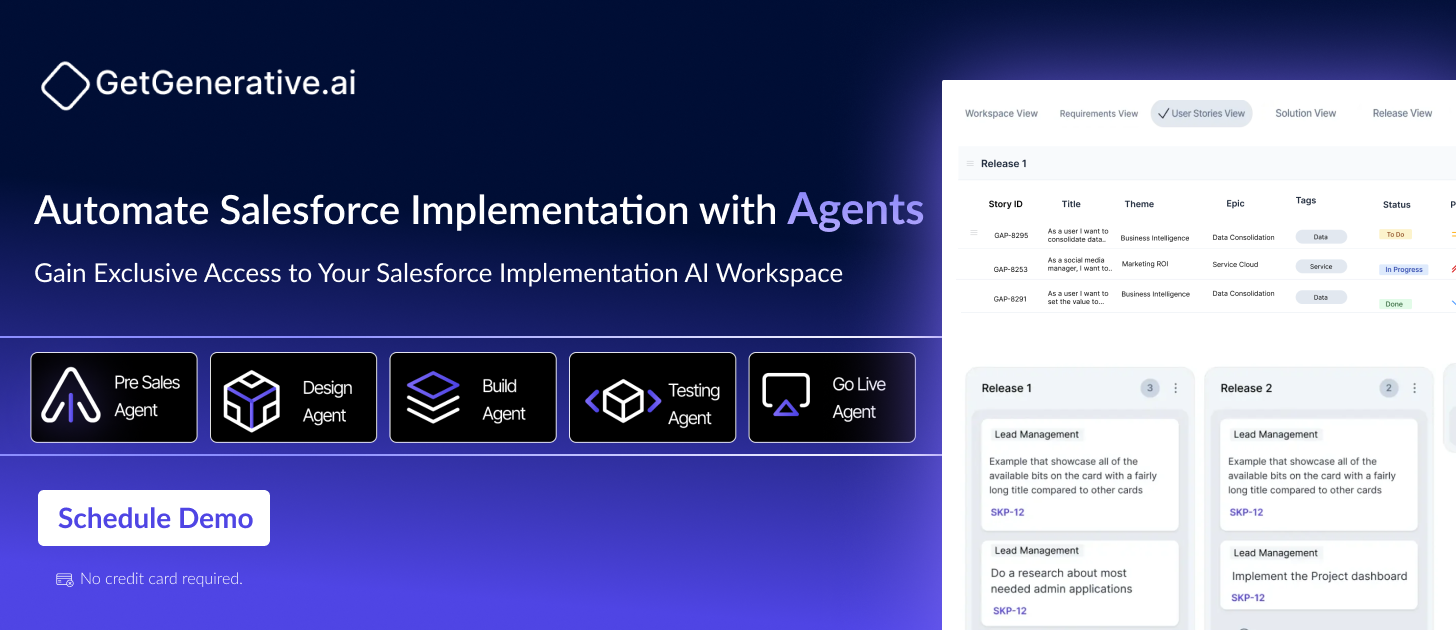Data Quality Dimensions with Examples
Every decision your business makes relies on data, but the quality of that data determines how impactful those decisions can be. Inaccurate, incomplete, or outdated data can derail strategies, waste resources, and damage trust. To combat this, businesses focus on data quality dimensions—criteria that define the reliability and fitness of data for its intended purpose.
Understanding these dimensions is the first step in building a foundation of trustworthy data.
What Are Data Quality Dimensions?
Data quality dimensions are measurable attributes that help assess whether data is accurate, complete, consistent, timely, valid, and unique. Each dimension plays a crucial role in determining the usability and reliability of data. By addressing these attributes, organizations can ensure their data is fit for both operational and analytical purposes.
The Importance of High-Quality Data
Quality data is the lifeblood of modern businesses. It influences decisions, optimizes operations, and drives innovation. Poor data quality, on the other hand, leads to inefficiencies, compliance risks, and missed opportunities. Here’s why high-quality data matters:
- It enhances decision-making by providing reliable insights.
- It supports regulatory compliance with accurate and valid records.
- It fosters customer trust through consistent and personalized experiences.
- It reduces operational costs by avoiding errors and rework.
The 6 Core Data Quality Dimensions
Accuracy
Accuracy measures how well data reflects the real-world entities or scenarios it represents. Accurate data ensures reliability and builds trust in decision-making processes. For instance, a retail store’s sales data must match the actual transactions processed at the register to ensure accurate revenue reporting.
To improve accuracy, organizations compare data with trusted sources. Automated validation processes and regular audits also help identify and correct errors.
Completeness
Completeness refers to having all the necessary data required for a particular use case. Missing information can hinder operations, decision-making, and customer engagement. For example, if a customer database lacks email addresses, the marketing team may struggle to execute targeted campaigns.
Organizations can measure completeness by analyzing missing values or records. Profiling tools and data governance policies can help address gaps and improve this dimension.
Consistency
Consistency ensures that data remains uniform across different systems and datasets. Inconsistent data can lead to conflicting insights and operational inefficiencies. For instance, a company’s ERP system might show a customer as “active,” while the CRM indicates they’re “inactive,” leading to mismatched communications.
Cross-system reconciliation and implementing master data management practices can help resolve inconsistencies.
Timeliness
Timeliness evaluates whether data is available and up-to-date when needed. This is particularly critical for time-sensitive operations like fraud detection or inventory management. For example, a stock-trading platform relying on outdated price data risks financial losses for its users.
Businesses can track data latency and establish real-time data pipelines to improve timeliness.
Validity
Validity checks whether data adheres to defined formats, rules, or standards. Invalid data often arises from user errors or poorly configured systems. For example, a zip code that doesn’t match the country’s format can disrupt deliveries and customer satisfaction.
Organizations can enforce data validation rules during entry or integration to maintain validity.
Uniqueness
Uniqueness ensures that data doesn’t contain duplicate records. Duplicates inflate storage costs, disrupt analytics, and create confusion. For instance, a CRM listing a single customer under two entries—once as “John Smith” and again as “J. Smith”—can result in redundant communications.
Regular deduplication processes and advanced matching algorithms are vital to maintaining uniqueness.
Also Read – Best Practices for Successful Data Management
How Data Quality Impacts Business Outcomes
Each dimension contributes to building reliable data, but overlooking even one can have significant consequences. For example, accurate but incomplete data may still lead to incorrect conclusions. Similarly, timely but invalid data may disrupt operations.
Inadequate data quality affects:
- Customer Experience: Duplicate or inconsistent records lead to impersonal and frustrating interactions.
- Operational Efficiency: Errors and redundancies waste time and resources.
- Regulatory Compliance: Inaccurate or incomplete data may result in legal penalties.
By addressing all six dimensions, businesses can optimize their data for both strategic and operational needs.
Strategies to Improve Data Quality
Improving data quality requires proactive measures across all dimensions. Here are some strategies to consider:
Implement Data Governance
Establish clear policies and standards for data collection, storage, and usage. A dedicated data governance team ensures compliance and promotes accountability.
Automate Data Validation
Automation reduces manual errors and increases efficiency. Tools like Talend and Informatica automate validation checks, ensuring data adheres to defined rules.
Regularly Audit and Cleanse Data
Schedule periodic data audits to identify issues and clean datasets. Data cleansing tools help correct inaccuracies, fill gaps, and eliminate duplicates.
Use Real-Time Monitoring
Real-time monitoring tools track data flows and flag inconsistencies or delays. These tools are crucial for dynamic industries like finance and e-commerce.
Educate Teams
Train employees on data quality best practices. Empowering teams with knowledge reduces errors at the source, ensuring better data quality downstream.
Applications of Data Quality Dimensions in Industries
Healthcare
In healthcare, accurate and complete patient records are vital for effective treatment. Missing or invalid data could lead to misdiagnoses, impacting patient outcomes. Ensuring timeliness is also critical for emergency care and real-time monitoring.
E-Commerce
E-commerce platforms rely on valid and unique customer profiles for personalized marketing. Inconsistent inventory data can result in stockouts or overstocking, affecting sales and customer satisfaction.
Banking and Finance
In the financial sector, accuracy and validity are crucial for compliance and fraud prevention. Timely data enables rapid decision-making in areas like loan approvals or investment strategies.
Supply Chain Management
Timely and consistent data ensures smooth operations in supply chains. For instance, accurate delivery schedules and inventory tracking reduce delays and costs.
Also Read – Salesforce Data Integration Tools: A Comprehensive Guide
Emerging Trends in Data Quality Management
As the volume and complexity of data grow, new trends are shaping how organizations manage data quality:
AI-Powered Data Quality Tools
Artificial intelligence can automate data profiling, anomaly detection, and error correction. AI-driven tools also provide predictive insights to prevent quality issues before they occur.
Big Data Quality Management
With the rise of big data, ensuring quality at scale is more challenging than ever. Advanced analytics and distributed processing tools like Apache Spark help manage large datasets effectively.
Real-Time Data Pipelines
Real-time data processing is becoming essential for industries like IoT and autonomous vehicles. Ensuring timeliness and accuracy in real-time pipelines requires robust frameworks like Apache Kafka.
Integration with Data Governance Platforms
Data quality is increasingly integrated with governance platforms to provide a unified approach to data management. These platforms streamline compliance and enhance transparency.
Conclusion
Data quality transcends being a mere technical concern—it is a critical component of strategic success. Prioritizing the six essential dimensions—accuracy, completeness, consistency, timeliness, validity, and uniqueness—enables organizations to fully harness the power of their data.
Invest in robust tools, establish governance policies, and educate your teams to maintain data quality. Remember, data is only as valuable as its quality.
Visit GetGenerative.ai to learn more!
FAQs
1. What are the six data quality dimensions?
The six dimensions are accuracy, completeness, consistency, timeliness, validity, and uniqueness. Each plays a critical role in assessing and maintaining data quality.
2. How can poor data quality impact business decisions?
Inaccurate or incomplete data can lead to flawed decisions, operational inefficiencies, and financial losses. It also erodes trust in analytics.
3. What tools help maintain data quality?
Popular tools include Talend, Informatica, OpenRefine, and Apache NiFi. These tools automate validation, profiling, and cleansing processes.
4. How does AI enhance data quality management?
AI automates error detection, anomaly identification, and data profiling. It also provides predictive insights to prevent future quality issues.
5. Why is timeliness important in data quality?
Timely data ensures decisions are based on the most current information, which is critical for dynamic industries like finance and healthcare.




